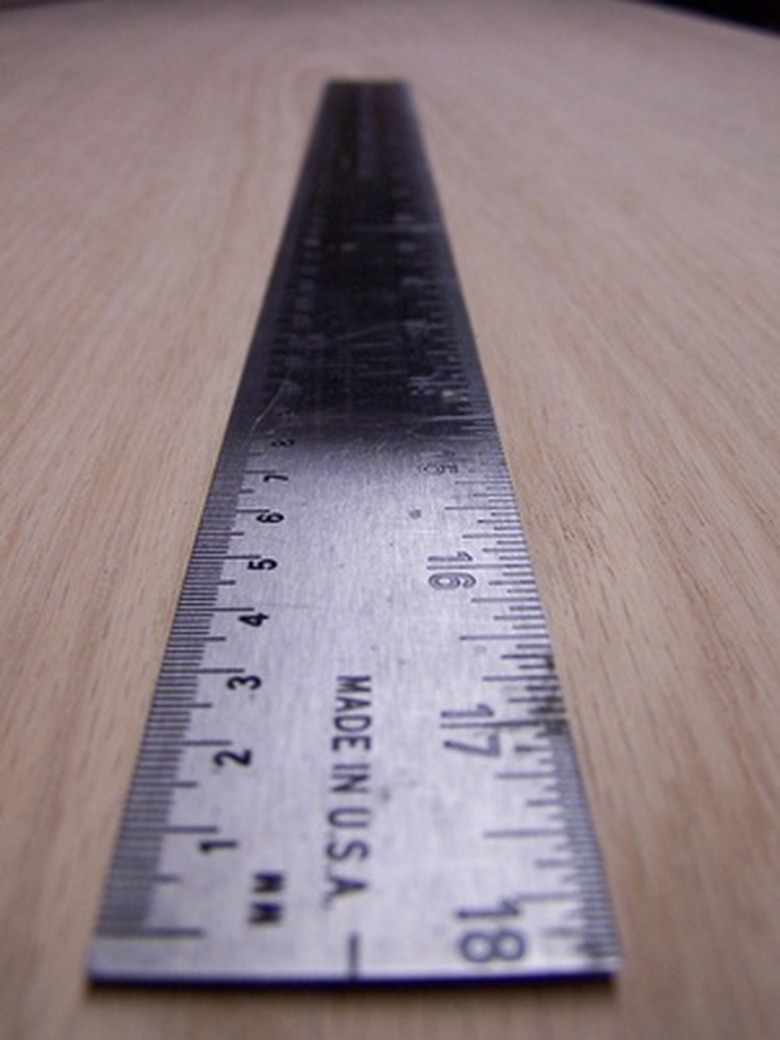How To Calculate Height In Centimeters
Height is a physical property that naturally assumes great importance in a three-dimensional, visual world. Tall mountains, tall buildings and tall people command extra attention; height is also an important metric in health, engineering and countless other fields.
Humans have produced a variety of tools for measuring height, and have come up with different scales for assigning numbers to this property. Height is a unit of linear measure, and linear measure, or displacement, is a fundamental quantity in physics.
In the modern world, the metric system, or international system of units (SI), is the measurement system of choice in most parts of the world, with the United States standing as the sole significant holdout in the 21st century. The centimeter is a common unit of measure because it works conveniently for the sizes of many everyday objects.
What Is the Metric System?
What Is the Metric System?
The metric system was adopted in the late 18th century in Europe and was applied to mass and length. The meter was originally defined as one-ten millionth (1/10,000,000) of the distance from the equator to the North Pole. The use of modern measuring equipment has modified this value somewhat, but it is very close to the original value.
The meter is divided or multiplied by powers of ten to get other units suitable for whatever problem is at hand. The decimeter is 1/10 of a meter but is rarely used; in contrast, the centimeter (1/100) and millimeter (1/1,000) are very common.
Moving in the other direction, the decameter (10 meters) and hectometer (100 meters) are seldom encountered, but the kilometer (1,000 meters) is vitally important in transportation and other realms.
Height Conversions Between "Competing" Systems
Height Conversions Between "Competing" Systems
Even if you know how tall you are, you probably do not know your height in centimeters if you live in the U.S., where the foot and the inch are the ruling units over human-being-sized distances.
To get your height in inches alone from the way it's usually presented (e.g. 5' 7"), multiply the total number of feet by 12 and then add the remainder. For example, a 5' 7" person is (5 × 12) + 7 = 67" tall.
To convert inches to centimeters (in to cm), simply multiply by 2.54. This is because there are exactly 2.54 cm and 25.4 mm (millimeters) in one inch, and by extension, (12 × 25.4) = 304.8 cm in a foot.
Calculate Height in cm
Calculate Height in cm
If you have a height measurement that is already in metric units, you're in luck and need to move the decimal point an appropriate amount. For example, 5.46 m = (100)(5.46) = 546 cm; 0.375 km = (1,000)(0.375) = 375 m = (100)(375) = 37,500 cm.
If the height is in some other units, such as inches, you would proceed as above, with the basic factor to keep in mind being 1 inch = 2.54 cm.
See the Resources for an example of an online tool that can be used to do these conversions and others like them very quickly.
Height Measurements of Larger Objects
Height Measurements of Larger Objects
If you want to know the height of larger object such as a tree in cm or other units, you need to avail yourself of a protractor, sextant or other device that allows you to estimate the angle above the tip of the tree from the horizontal to your point of view. You also need to know how far your eyes are from the ground and from the tree itself.
With this information in hand, you can use trigonometry to get a value for the height of the tree. If A is the angle, d is the distance from you to the tree, and E is eye height, then the height h of the tree is given by:
h = (tan A)(d) + E
Cite This Article
MLA
Beck, Kevin. "How To Calculate Height In Centimeters" sciencing.com, https://www.sciencing.com/calculate-height-centimeters-7830643/. 1 February 2020.
APA
Beck, Kevin. (2020, February 1). How To Calculate Height In Centimeters. sciencing.com. Retrieved from https://www.sciencing.com/calculate-height-centimeters-7830643/
Chicago
Beck, Kevin. How To Calculate Height In Centimeters last modified March 24, 2022. https://www.sciencing.com/calculate-height-centimeters-7830643/
